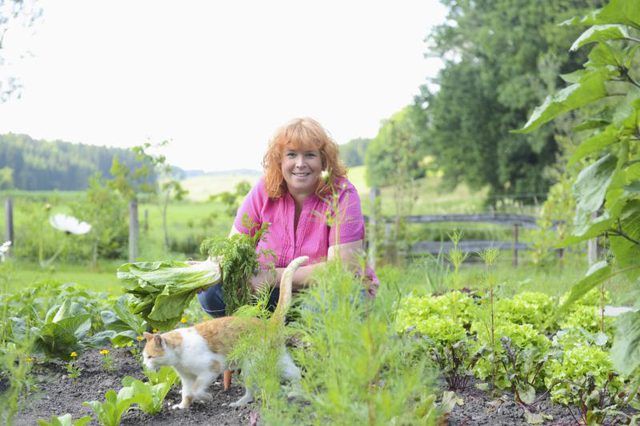Bulbs
Flower Basics
Flower Beds & Specialty Gardens
Flower Garden
Garden Furniture
Garden Gnomes
Garden Seeds
Garden Sheds
Garden Statues
Garden Tools & Supplies
Gardening Basics
Green & Organic
Groundcovers & Vines
Growing Annuals
Growing Basil
Growing Beans
Growing Berries
Growing Blueberries
Growing Cactus
Growing Corn
Growing Cotton
Growing Edibles
Growing Flowers
Growing Garlic
Growing Grapes
Growing Grass
Growing Herbs
Growing Jasmine
Growing Mint
Growing Mushrooms
Orchids
Growing Peanuts
Growing Perennials
Growing Plants
Growing Rosemary
Growing Roses
Growing Strawberries
Growing Sunflowers
Growing Thyme
Growing Tomatoes
Growing Tulips
Growing Vegetables
Herb Basics
Herb Garden
Indoor Growing
Landscaping Basics
Landscaping Patios
Landscaping Plants
Landscaping Shrubs
Landscaping Trees
Landscaping Walks & Pathways
Lawn Basics
Lawn Maintenance
Lawn Mowers
Lawn Ornaments
Lawn Planting
Lawn Tools
Outdoor Growing
Overall Landscape Planning
Pests, Weeds & Problems
Plant Basics
Rock Garden
Rose Garden
Shrubs
Soil
Specialty Gardens
Trees
Vegetable Garden
Yard Maintenance
How to Add Manure to Your Home Vegetable Garden
How to Add Manure to Your Home Vegetable Garden. More and more gardeners are looking for natural alternatives to chemical fertilizers, and farm animal manure is one of the most familiar natural fertilizers. Manure, particularly when composted, is a balanced source of nutrients in a slow-release form easily used by plants. **When you put manure on a...

More and more gardeners are looking for natural alternatives to chemical fertilizers, and farm animal manure is one of the most familiar natural fertilizers. Manure, particularly when composted, is a balanced source of nutrients in a slow-release form easily used by plants. When you put manure on a vegetable garden, take the precautions that are necessary to avoid contaminating food.
Types of Manure
Avoid using manure from meat-eating animals to minimize the risk of transferring diseases. Although most farm animal manure is safe to use on a garden, exercise caution with poultry manure. Manure from chickens and turkeys that were fed roxarsone-amended food contains inorganic arsenic, which is a carcinogen. Use poultry manure only if you know the animals that produced it were not fed arsenic-containing food.
The exact percentage of nutrients by weight in manure varies widely; they depend on the manure source and whether the manure is fresh or composted. In addition to nitrogen, phosphorous and potassium, manure is an effective source of micronutrients.
The nutrient content of farm animal manure mixed with bedding is expressed as a percentage:
Beef cattle: 1.1 nitrogen, 0.9 phosphorous, 1.3 potassium
Dairy cattle: 0.5 nitrogen, 0.2 phosphorous, 0.5 potassium
Chicken: 2.8 nitrogen, 2.3 phosphorous, 1.7 potassium
Horse: 0.7 nitrogen, 0.2 phosphorous, 0.7 potassium
*Turkey: 1.0 nitrogen, 0.8 phosphorous, 0.7 potassium
Fresh vs. Composted
Because of the danger from poultry manure, horse or cattle manure is often the best choice for vegetable gardens. Fresh cattle manure, however, may contain bacteria such as Escherichia coli and Salmonella spp., and horse manure often carries undigested weed seeds that can germinate in a garden. Fresh manure is not safe to apply to a garden right before planting or while vegetables are growing.
Although spreading fresh manure on the garden might be the simplest way to apply it, there are several reasons to compost or age manure before applying it to a vegetable garden. The composting process generates heat, and when a compost pile is turned to heat-process the entire pile, the high temperatures may kill weed seeds and many pathogens, such as Escherichia coli. Maintaining the temperature at 130 or 140 degrees Fahrenheit for at least five days kills most pathogens. The compost pile temperature must be above 155 degrees Fahrenheit to kill the majority of weed seeds.
Smaller compost piles may not reach temperatures required to kill bacteria. Aging the manure by letting it sit for at least six months before applying it to the garden, however, reduces the risk of bacteria and prevents the "burning" of roots and foliage that occurs when manure nutrients are released too quickly.
Application Amount
Animal manures are high in salts. So be careful not to over-apply them on a vegetable garden. Apply manure by spreading it 1 inch deep across the garden surface once each year. The task requires about 300 pounds of compost for every 100 square feet of soil surface. Work the manure into the soil to a depth of 6 to 8 inches.
Once composted, manure contains nitrogen in a slow-release form. Therefore, most of its nitrogen isn't available during the first year after the manure's application. Composted manure from dairy cattle, for example, releases only 5 to 20 percent of its total nitrogen during the first year. You can apply blood meal at a rate of 1 to 2 pounds per 100 square feet to supply extra nitrogen. This task is necessary only the first year because nitrogen from the composted manure's first application still will be available when you apply composted manure the second year.
Timing of the Application
Spread composted manure on a vegetable garden at least 1 month before planting time. Compost stimulates microbial activity in the soil, which is not bad but may interfere with vegetable seed germination. If you made the compost yourself, then ensure it has two to four months to sit and "cure" after the hot composting phase before you spread it on the garden.
Never use fresh manure on a vegetable garden in the spring before planting. If you want to use fresh manure, you may apply it in the fall and let it age over winter before working it into the soil in spring. Ensure the manure sits for four to six months on the garden before you till the soil in spring and plant edible crops. It is still, however, safer to compost the manure before its use on the garden.